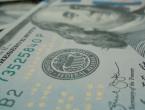On the US stock market front, although the Republican and Democratic parties have not reached an agreement on the fiscal spending plan, leading to the US government shutdown for the first time in seven years, the US stock market has remained strong without significant impact. This is mainly because the US government shutdown has had a limited impact on fundamentals. US President Trump intends to use this opportunity to lay off government employees and reduce fiscal expenditures, and it is expected that the duration of this shutdown may not be too long. The previous US government shutdown also occurred during Trump’s term; it lasted longer and had a more noticeable impact on the economy.
The main reason for the US government shutdown is the failure of the two parties to reach a consensus on the US government debt ceiling, coupled with major differences over the fiscal spending plan. The US government’s debt has reached as high as $37 trillion, and the time it takes to add another $1 trillion in debt is constantly shortening. This indicates that the US government’s expenditures far exceed its fiscal revenue, leading to a soaring debt burden. Annual interest payments on national debt alone amount to $1 trillion, which has also raised doubts about the credibility of the US dollar. In contrast, the price of gold (priced in US dollars) has been rising steadily; recently, the international gold price has even broken through the $3,900 per ounce mark, approaching $4,000 per ounce.
Over the past two years, I have consistently held a bullish view on gold. The in-depth logic behind this is the continuous expansion of the US dollar issuance scale and the rising US government debt, both of which will shake the confidence of global capital in the US dollar. As a hard currency, the price of gold will naturally rise accordingly. The US government shutdown may trigger a new wave of impact on the US unemployment rate, thereby accelerating the Federal Reserve’s interest rate cut cycle. Currently, the probability of the Federal Reserve cutting interest rates by 25 basis points in October is close to 100%, and it is expected that a third interest rate cut within the year may occur in December, lowering the federal funds rate to the range of 3.5%-3.75%. Fed rate cuts will cause the US dollar index to continue declining, while non-US currencies such as the RMB will appreciate. Additionally, Fed rate cuts will trigger more central banks to follow suit in cutting rates, and at the same time provide greater room for monetary policy easing for the People’s Bank of China.
Recently, the People’s Bank of China announced that it will release RMB 1.1 trillion through open market operations and reverse repos. This will undoubtedly increase market liquidity and provide strong support for the post-holiday strength of the A-share market. The Hong Kong stock market has performed strongly recently, especially the sharp rise of the Hang Seng Tech Index. The Hang Seng Tech Index represents the direction of economic transformation, with many of its constituent stocks belonging to the technology innovation and internet sectors—areas I have long been bullish on. The sharp rise of the Hang Seng Tech Index is expected to drive the post-holiday A-share hard technology sector to remain strong, including fields such as humanoid robots, solid-state batteries, computing power and algorithms, chip semiconductors, and innovative drugs.
Currently, the US stock market has returned to a new all-time high, but the US government shutdown may affect US economic data. Moreover, the continuous rise of the US stock market may increase the risk of a pullback, and some investors have begun to pay attention to the issue of overvalued US stocks. Since last year, legendary investor Warren Buffett has significantly reduced his holdings in US stocks to avoid the risk of a pullback in US stocks from high levels. For the Hong Kong stock market, its recent strength has laid a solid foundation for the post-holiday recovery of the A-share market. Currently, the interaction between A-shares and Hong Kong stocks is constantly strengthening. With the Hong Kong stock index hitting a four-year high, the bull market trend of A-shares and Hong Kong stocks has been further confirmed—this is undoubtedly an important support for the A-share market to achieve further upward breakthroughs.
A long-term slow bull market is undoubtedly an effective means to drive consumption and an important driver for boosting economic growth. Over the past two years, I have consistently emphasized the importance of launching a bull market. A bull market trend will not only generate a wealth effect and increase residents’ property income, but also support more technology innovation enterprises in listing on the capital market. This, in turn, will promote the development of new productive forces, help China’s economy achieve transformation, and embark on a second growth curve.
In the event of any inconsistency between the English and Chinese versions, the Chinese version will prevail.This article is from Plotio. Please indicate the source when reprinting.







 Download APP
Download APP
 ZhiSheng Live
ZhiSheng Live








